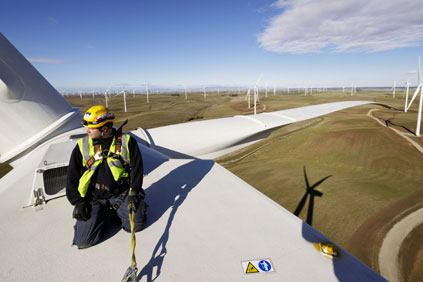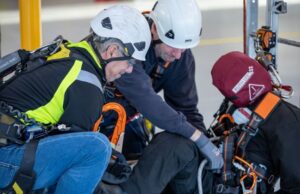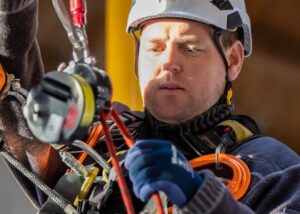The renewable energy sector in the United States is at a pivotal moment. Soaring installations in solar, wind, battery storage, and emerging clean technologies are transforming the energy landscape—and generating unprecedented demand for skilled workers. But despite the opportunity, a pressing shortage of trained talent could slow this clean-energy revolution. Let’s explore where the sector stands, and how STL USA is strategically positioned to help employers meet this critical challenge.
1. Industry Momentum & Job Growth
Explosive capacity expansion: In 2024 alone, over 90 % of new U.S. electricity-generating capacity came from renewables: solar, wind, geothermal, hydropower, and biomass. Solar additions alone made up 81 % of that total.
Utilities & construction boom: The 2024 U.S. Energy & Employment Report showed renewable energy added 142,000 new jobs—over half of all new energy-sector employment. This growth outpaced total U.S. job creation by more than twofold.
Under the Inflation Reduction Act (IRA): Since August 2022, the IRA has fueled over 406,000 new clean-energy jobs across 48 states with $422 billion in investments.
2. Workforce Skills Gap — A Real Barrier
Despite rapid expansion, the sector is struggling to find trained workers:
Labor shortages stall projects: Solar and storage developers saw job growth of only 5.9 % in 2023—insufficient to meet demand. Skill gaps—particularly in engineering, project management, and electrical technicians—are raising costs and prolonging timelines.
Need for high-skill training: A striking 36 % of energy-sector roles are in high-skill occupations—well above the national average. Projections expect 8 % annual growth in roles such as electricians and heating/renewables techs, but certifications aren’t keeping pace .
Broader constraints: Workforce development remains underfunded in the U.S.—spending on adult training is one-fifth that of other OECD countries. While workers express eagerness to learn, education systems and state training programs lag behind.
3. Upskilling: A Make‑or‑Break Strategy
With growth on the line, the energy sector is doubling down on workforce development:
Apprenticeships & micro‑credentials: Rapid skill-build programs, partnering with schools and community colleges, are on the rise. Micro‑certification and credentialing (e.g. solar PV installation, safety credentials) help fast-track workers into high-demand roles.
Human + technical skill fusion: Employers emphasize leadership, change management, project planning alongside technical abilities. Learning platforms like Coursera report human skills dominate energy workforce demand.
Diverse recruitment: Women represent only ~26 % of the energy workforce, and Black workers ~9 %. Targeted recruitment, inclusion efforts, and paid training can expand these underrepresented talent pools.
Local pipelines: Apprenticeship initiatives for offshore wind—like the National Offshore Wind Training Center on Long Island—prove that collaboration among industry, government, and technical colleges can supply skilled labour.
4. STL USA: Closing the Skills Gap for Employers
Here’s how STL USA meets the sector’s urgent training needs:
World‑Class, Industry‑Recognized Certifications
STL USA offers full GWO (Global Wind Organisation) credentials—including Basic Safety, Technical Training, Rescue, Control of Hazardous Energies, plus NFPA 70E electrical certification—for technicians working in wind and solar.
Teach your workforce to top-tier standards: technicians trained by STL USA are ready to meet OEM, industry and safety expectations from day one.
Apprenticeship‑Ready Programs
The “Total Wind Training” pathway takes trainees from entry-level to OEM-grade expertise. It includes full competency tracking, plug‑and‑play apprenticeship support, and ORM compliance.
Programs tally certification hours, competency assessments, and streamline qualification – ideal for companies launching or enhancing apprenticeship schemes.
Tailored Upskilling & Safety Training Onsite
STL USA’s custom solutions: from needs assessments to bespoke course creation and onsite rollout. They collaborate closely with your HSE team to embed programs into your culture.
Recent STL USA news highlights electrical crossover training that specifically supports solar technicians—with industry-standard integration .
Operational Excellence from Day One
Hundreds of technicians trained with trusted workforce partners like RWE, Siemens Gamesa, GE, Pattern Energy—bringing safety and technical excellence directly to your site safetytechnologyusa.com.
In-house implementation or field delivery boost technician readiness while controlling training costs.
5. Why It Matters for Employers
By investing in structured, professional development:
Meet IRA-driven demand: With massive growth expected under the IRA and other clean-tech legislation, having safety-certified, technically competent technicians is non-negotiable.
Avoid costly delays: In 2023, labor constraints led to project delays and cost increases of over 40% in solar labor alone. Competent workers help you stay on schedule and budget.
Attract & retain talent: Investing in upskilling, apprenticeships, and development strategies improves employee engagement, broadens recruitment appeal, and retains underrepresented demographics.
Stay future‑proof: STL USA’s modular, competency-driven framework is designed to evolve with future renewable trends—wind, solar, battery, offshore wind, electrification—ensuring your workforce remains relevant
Conclusion
The U.S. renewable energy sector is booming—renewables account for more than half of new power capacity, and job growth continues at twice the national rate. Yet, a wide skills gap threatens to throttle this momentum. STL USA aligns perfectly with this urgent need, offering globally recognised training, apprenticeship support, and custom solutions to build safer, more capable technician teams.
For energy companies aiming to sustain growth, drive efficiency, and future‑proof their investment, partnering with STL USA on workforce development isn’t just smart—it’s essential.
Interested in training to become a wind safety training instructor?
Find out more, hit the EMAIL US button.



